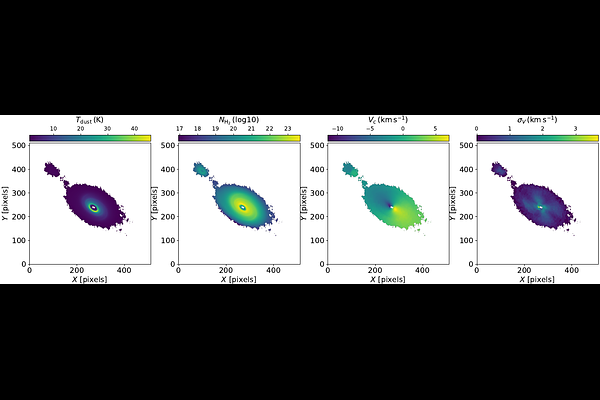BASIL: Fast broadband line-rich spectral-cube fitting and image visualization via Bayesian quadrature

BASIL: Fast broadband line-rich spectral-cube fitting and image visualization via Bayesian quadrature
Yuxin Lin, Masaki Adachi, Silvia Spezzano, Gordian Edenhofer, Vincent Eberle, Michael A. Osborne, Paola Caselli
AbstractMapping the spatial distributions and abundances of complex organic molecules in hot cores and hot corinos is crucial for understanding the astrochemical pathways and the inheritance of prebiotic material by nascent planetary systems. However, the line-rich spectra from these sources pose significant challenges for robustly fitting molecular parameters due to severe line blending and unidentified lines. We present an efficient framework, Bayesian Active Spectral-cube Inference and Learning (BASIL), for estimating molecular parameter maps for hundreds of molecules based on the local thermodynamic equilibrium (LTE) model, applied to wideband spectral datacubes of line-rich sources. We adopted stochastic variational inference to infer molecular parameters from spectra at individual positions, balancing between fitting accuracy and computational speed. For obtaining parameter maps, instead of querying every location or pixel, we introduced an active learning framework based on Bayesian quadrature and its parallelization. Specifically, we assessed and selected the locations or pixels of spectrum that are most informative for estimating the entire set of parameter maps by training a Gaussian processes model. By greedily selecting locations with maximum information gain, we achieve sublinear convergence. We benchmarked BASIL on a large synthetic datacube and demonstrated that it produces accurate 468 molecular parameter maps from 117 molecules within ~180 hours, orders of magnitude faster than traditional pixel-by-pixel fitting using Markov chain Monte Carlo methods, with visually reliable results emerging in just ~20 hours. Additional training iterations provide progressively more accurate results. This quick visualization meets the demands of big data in modern astronomical surveys.